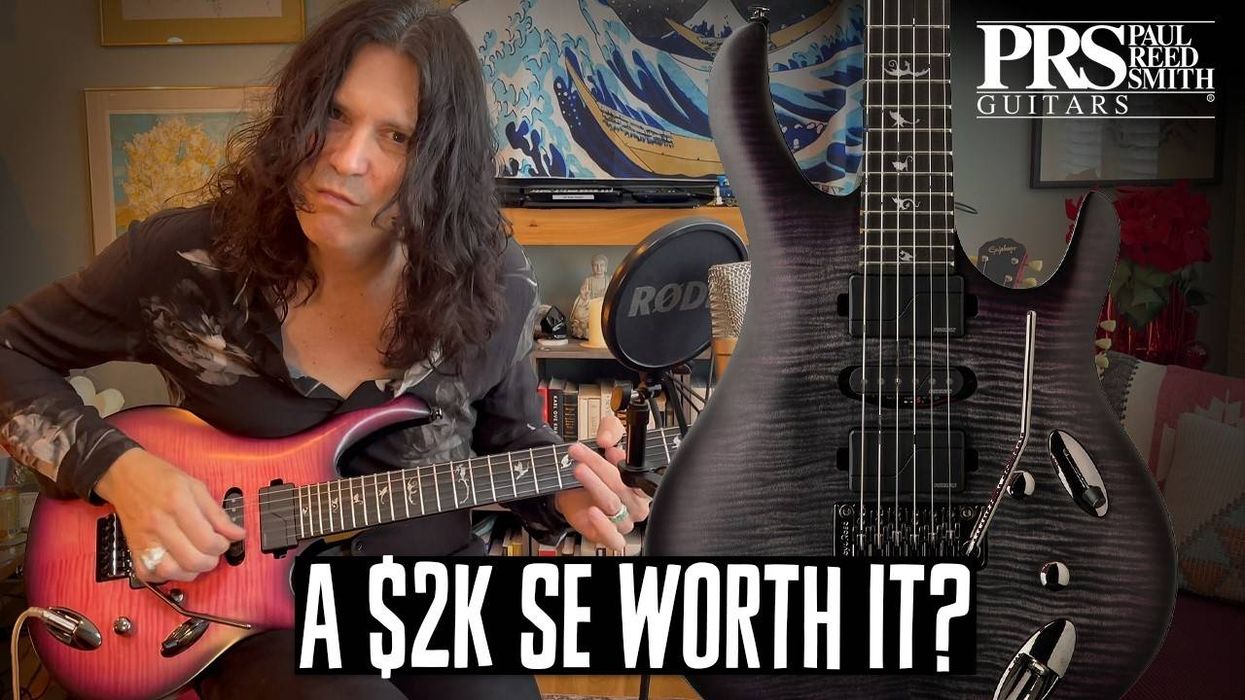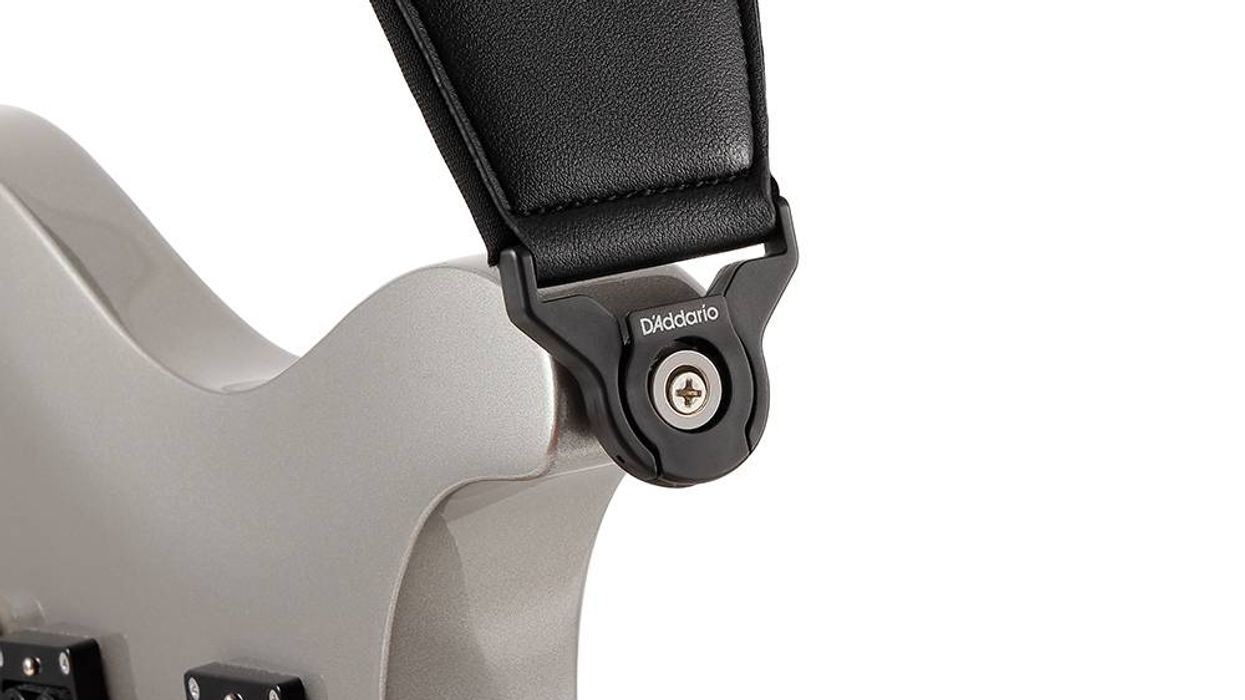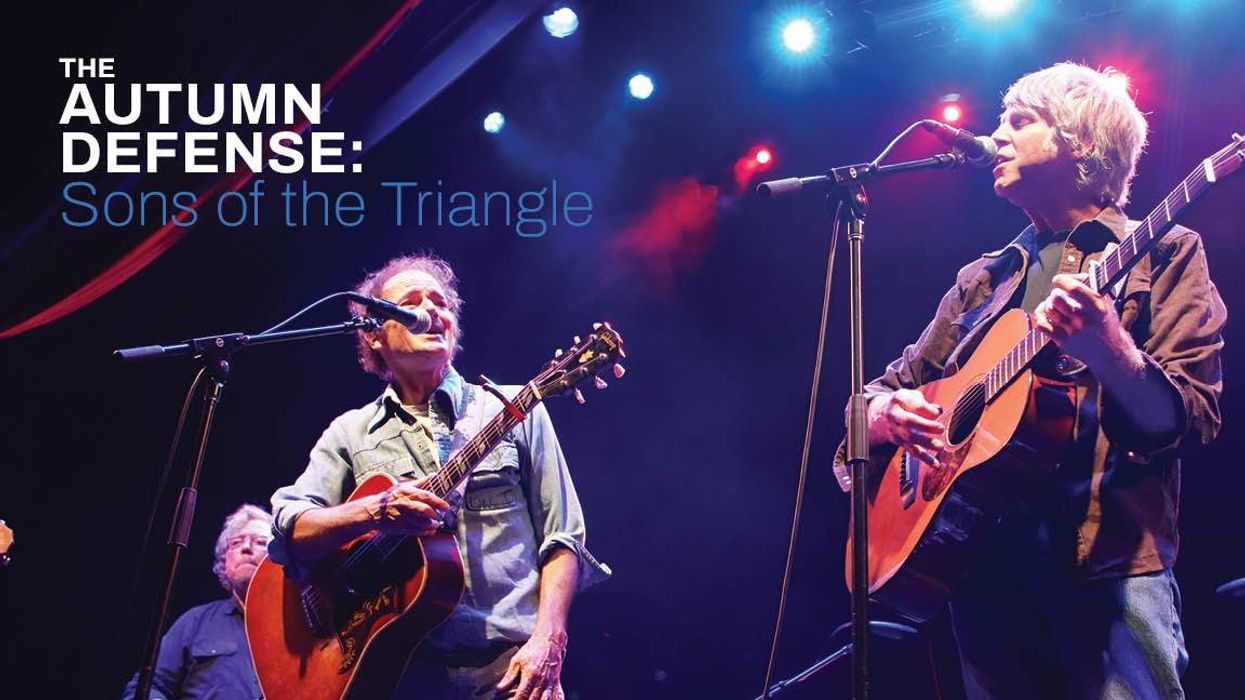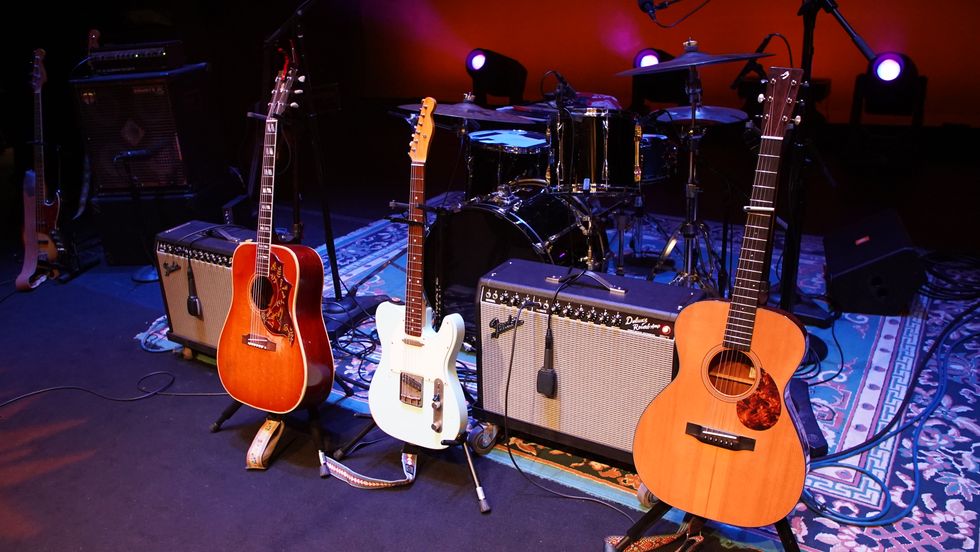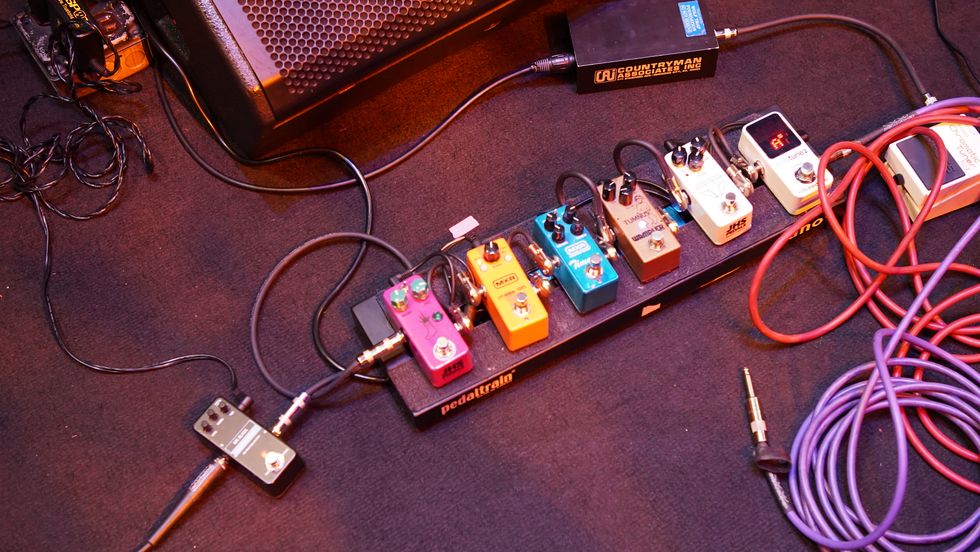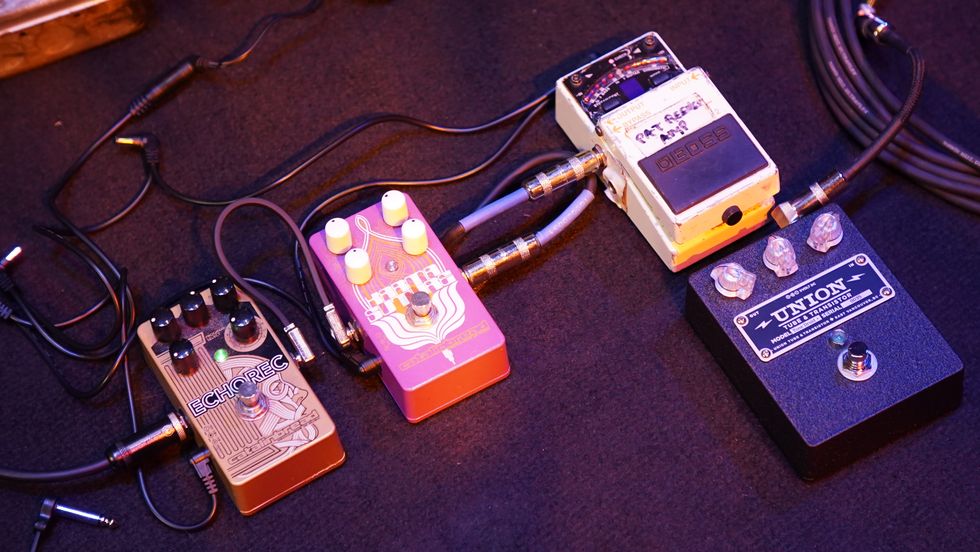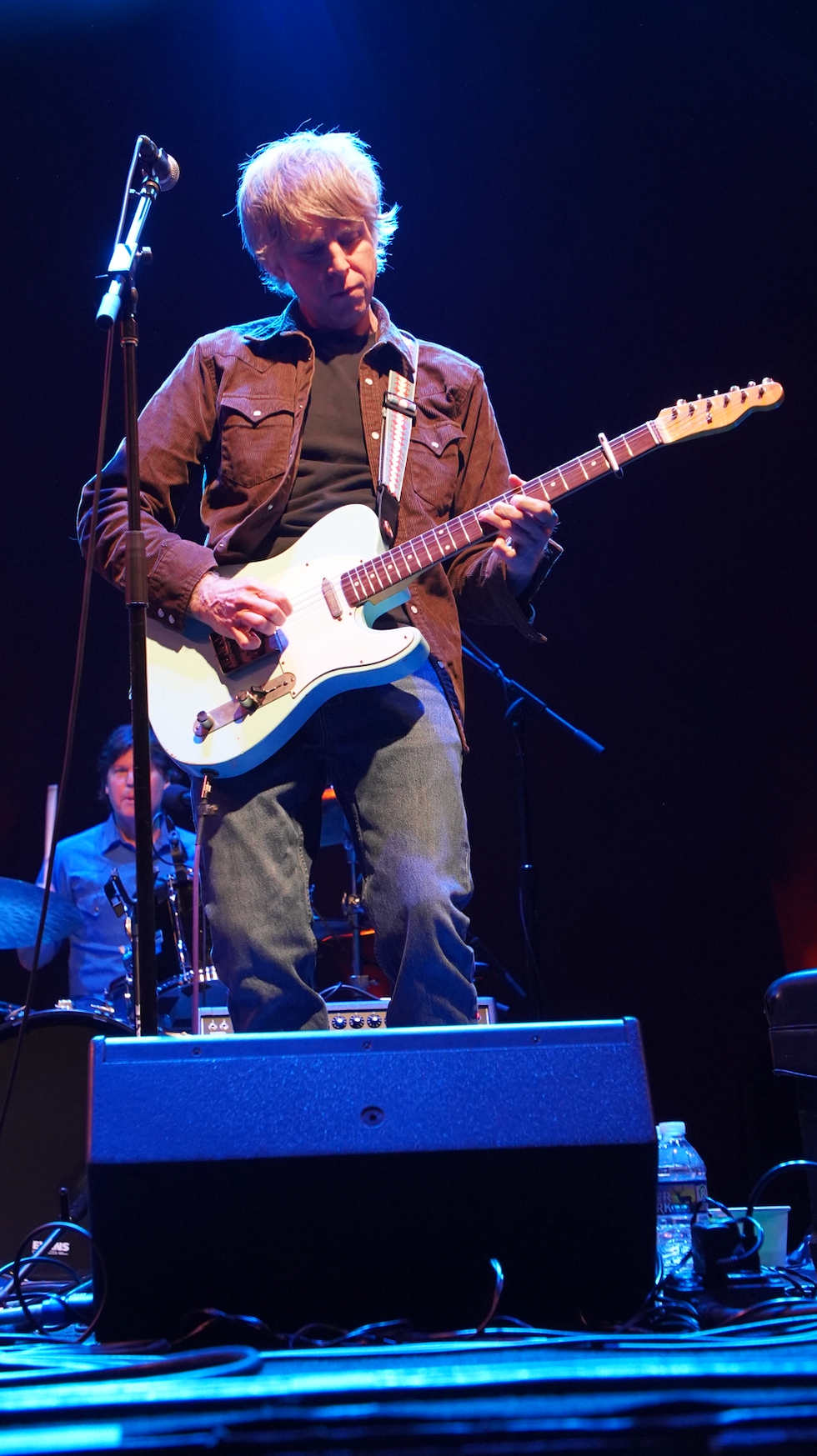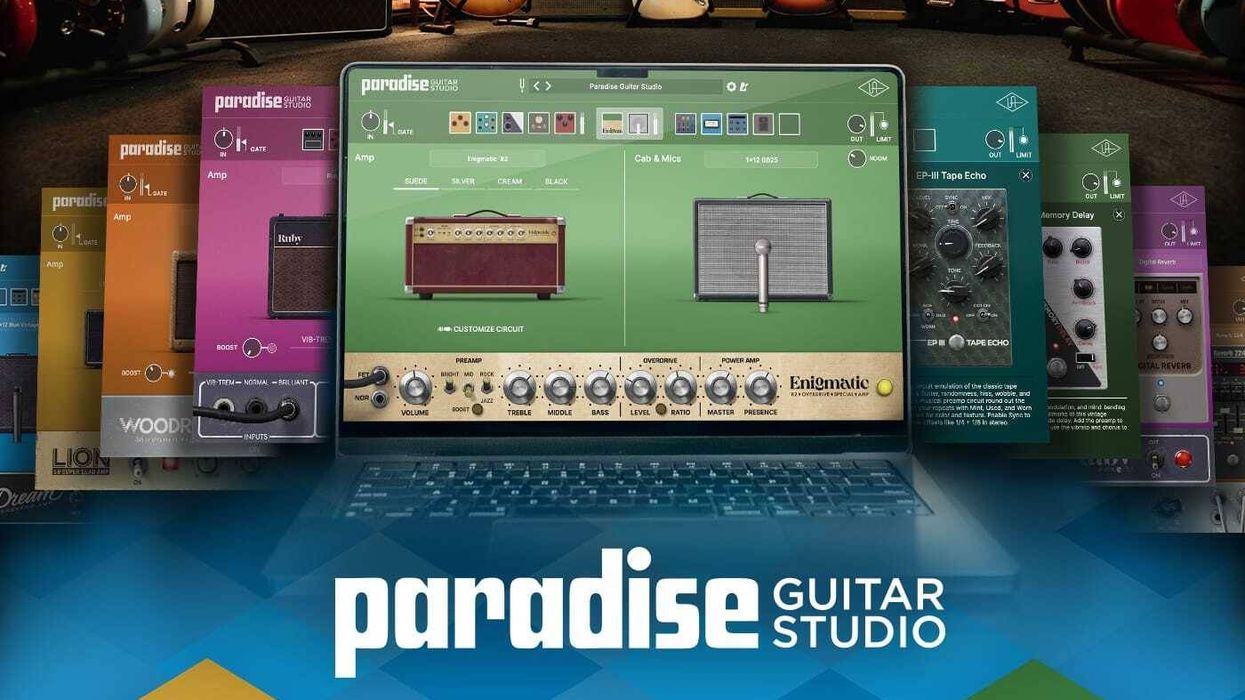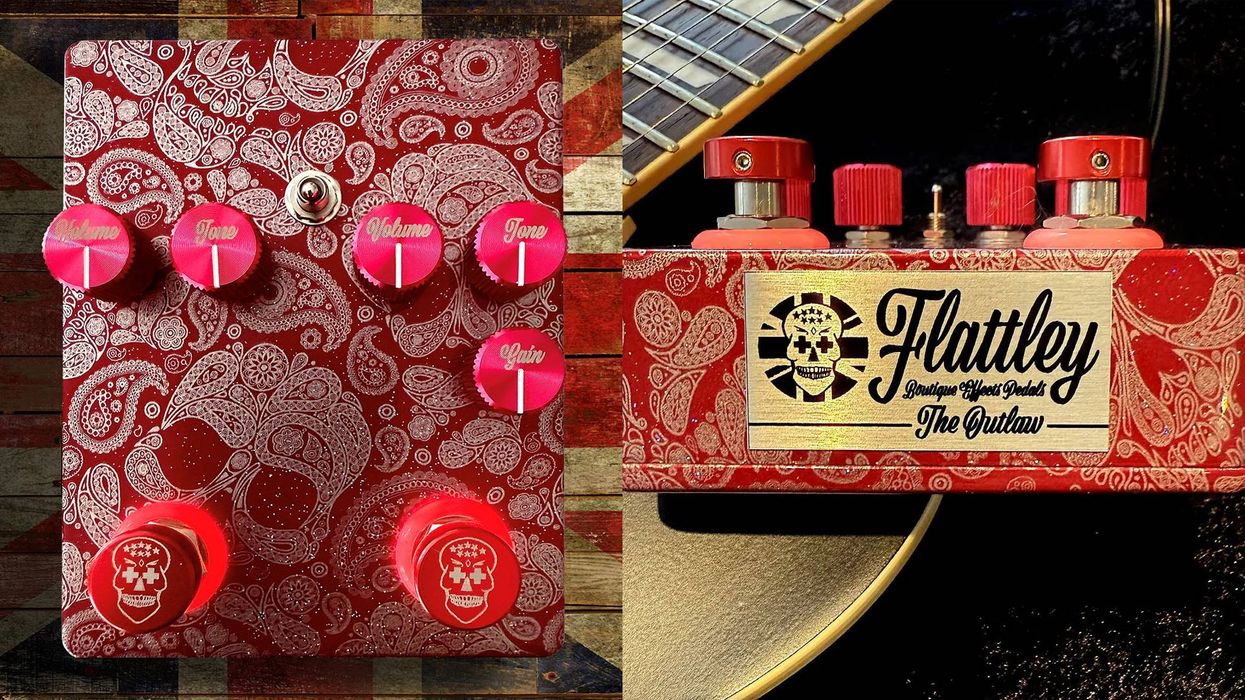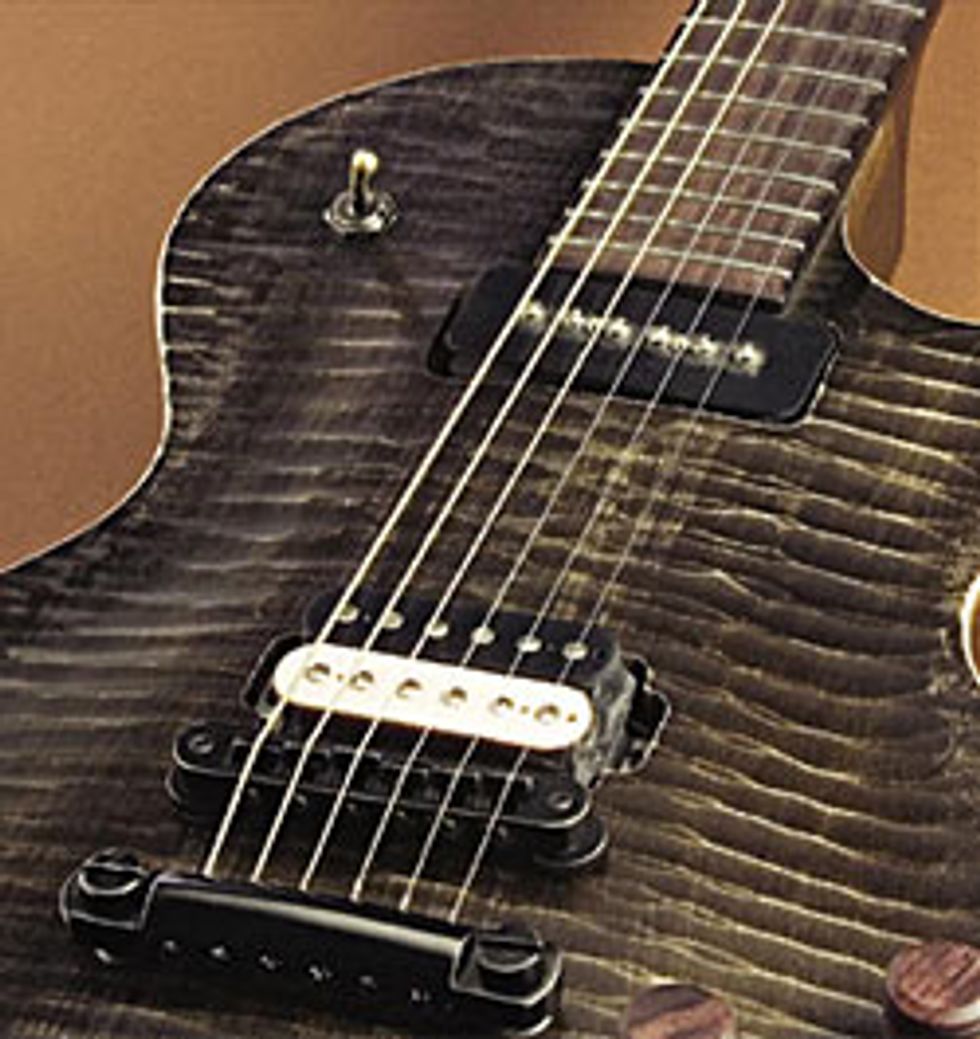 |
|
The truth is, Henry presides over allthings Gibson, and who am I toargue? I know guitars, not business,and I’m unable to look back fondlyon the Norlin-era stuff that wasavailable when I started playing.In fact, I level the majorityof my current Fender-biassquarely on my first Lester;a particularly heinous, 4000-pound LP Deluxe, madefrom approximately 40pieces of mahogany.
No matter how you feelabout Gibson’s press policies,at least thank them fornot making crap like thatanymore. And to specificallygive Henry props, he greenlightedthe BFG, and for that, ifI may paraphrase the title fromone of my favorite books, “GodBless You, Mr. Juszkiewicz.” Thisis one of the first non-vintage-reissuesolid bodies I’ve been excitedabout in ages, and it just happens tobe the most inflammatory thing to hitrock n’ roll since the Sex Pistols. Okay,maybe that’s an overstatement, but theBFG has been the cause of more than a fewfervent forum postings.

I hesitate to compare the BFG’s spartanappointments to the space-age minimalismof the Telecaster or the plain-Jane handsomenessof Martin’s D-18, but it does fitin with that utilitarian group as the tattooed,ex-biker uncle with a heart of gold. I’venever had a penchant for satin finishes, butthe dull finish works here, adding to the nobullshitvibe of the guitar.
Speaking of no BS, the guitar comes aboutas well equipped as a survival knife – whichis high-praise indeed. It features a P-90 atthe neck, a Burstbucker 3 at the bridge,one tone and two volume controls, 3-waypickup selector switch, and the secondmost critiqued aspect of the guitar after itsappearance – the kill switch. This enablesthe quick on/off effect heard on the fadeoutof Bowie’s “John, I’m Only Dancing,”without having to kill the volume on eitherpickup, invariably ending with your forgettingto turn it back up before embarrassing yourselfon the next tune. The BFG ships withthe standard Stopbar/Tune-o-matic bridgesetup, and sports Grover tuners. Various finisheshave differently treated hardware, withDistressed Black Chrome on the Trans Blackand Trans Gold finished models, and GunMetal on the Trans Cherry units.
The factory setup was decent, with oneminor niggle – the G and B strings werebinding a bit at the nut. Another nit to pickis that no one went around the edges ofthe guitar with a sander or router to takethe edge off, rewarding enthusiastic strummingwith a sharp pain in the forearm,although it could come in handy for cheeseslicing. Luckily, my generous belly saved mefrom suffering the same fate from the backedge. The action was set to factory specs:5/64” at the 12th fret on the bass side,3/64” on the treble, with no fretting out orbuzzing after dropping the action down to3/64” on both sides.
The neck was nice and straight, sporting.004” relief measured at the 8th fret,although this could be attributable to theremnants of Tropical Depression Erin, whichwas keeping things damp around here. Theintonation was pretty far off, but thankfully,no odd moves were needed to get it dialed.Something else that seemed peculiar wasthe height of the Burstbucker 3, but thiswas mostly a visual hiccup due to the lackof pickup surrounds. There is plenty of blacktape around the windings to offer protectionfrom any errant picking.
I’ve always put a lot of stock in how a guitarsounds unplugged, and the BFG soundedgreat; really woody, articulate and loud, likea rock n’ roll machine even before beingamplified. Plugging in the BFG took nothingaway from the unamplified vibe, with boththe BB3 and P-90 adding rather than takingaway from the guitar’s solid fundamentaltone. It took me a while to quit trying tochange pickups via the kill-switch, which isrelegated to the spot traditionally occupiedby the pickup selector. Each pickup has itsown volume control while the singletone knob serves double duty. Thisdidn’t bother me, but hardcore LPfanatics may take a while to adjust.
The neck position P-90 is phenomenal,offering up really great tones, suitablefor roots rock, blues, even some jazz,although I felt like a proper git whenattempting “Take Five” on somethingthis primal. The neck pickupwould be apropos for protoblues,proto-rock – prettymuch proto-anything. TheBurstbucker 3 also matcheswell with the BFG,with its medium outputbeing a great match volume-wise with the P-90.The sound of the twopickups combined was areal treat, adding the BB3’swarm, crunchy definition tothe P-90’s hollow-ish mids. Ihonestly figured part of the review processwould include envisioning replacementsuggestions for the stock pickups, but theP-90 and BB3 suit the hot-rod aestheticreally well.
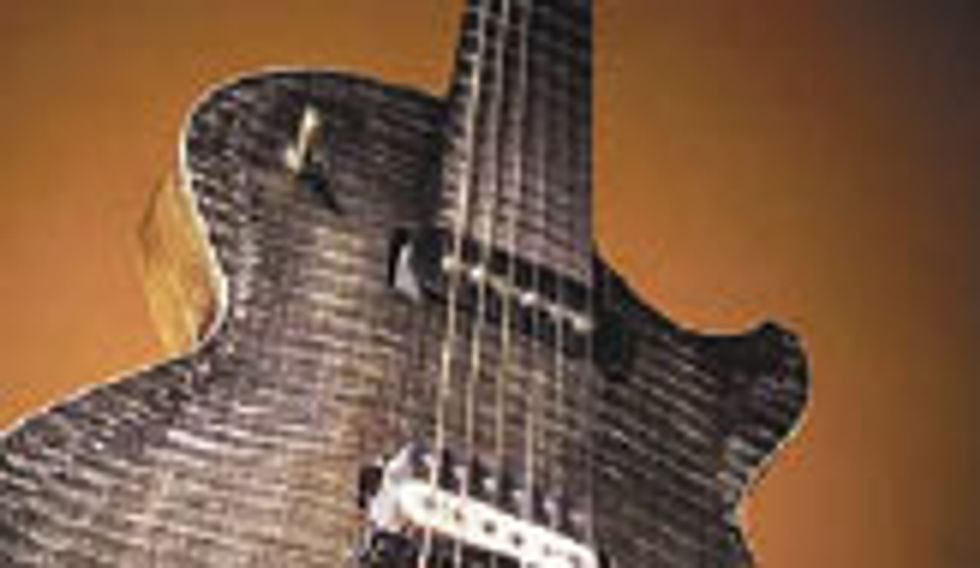
The BFG is first and foremost a rock n’roll machine, the Les Paul equivalent of aprimer-black ’32 flathead Ford, galvanizingopinions in much the same way. Either youlike pinstripes on primer or you don’t. If youhave the SuicideGirls bookmarked, and youplay “Trash” by the New York Dolls whenscoping out a new amp, check this out. Ifyou buy guitars based on their tops, givethis one a pass. It just won’t make sense.
| Rating... | ||
| Tone... | ||
| Craftsmanship... | ||
| Features... | ||
| Value... | ||
| Overall... | ||
Gibson Guitar Corp.
MSRP $1399
gibson.com
Our expert has stated his case,now we want to hear yours. Log on and share yourcomments and ratings.
